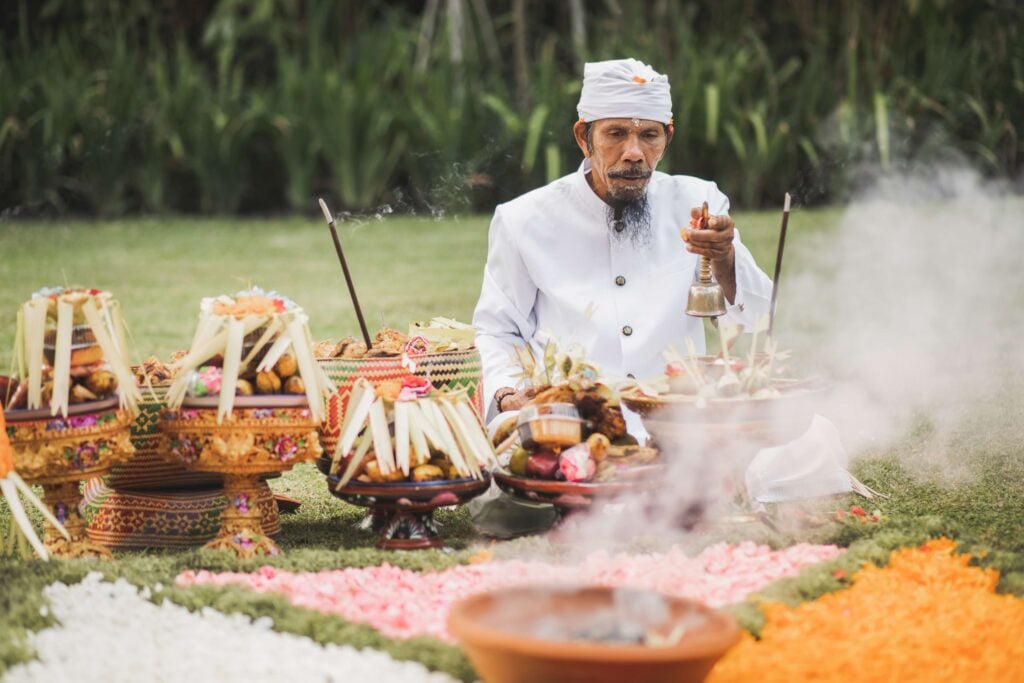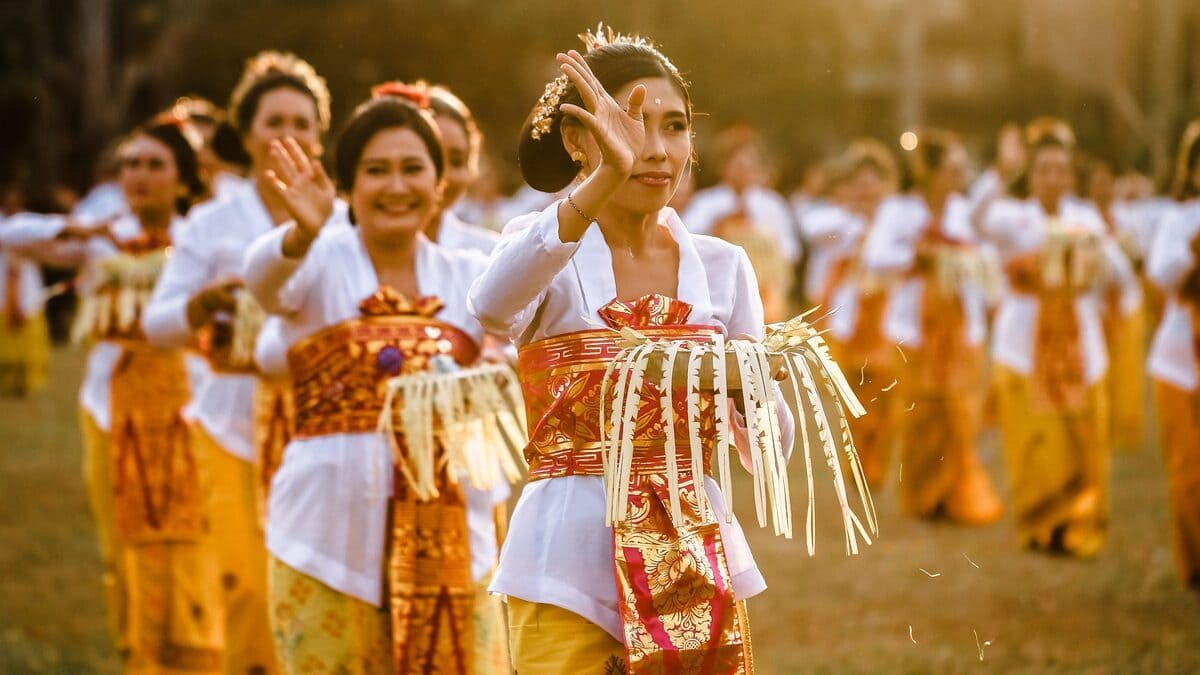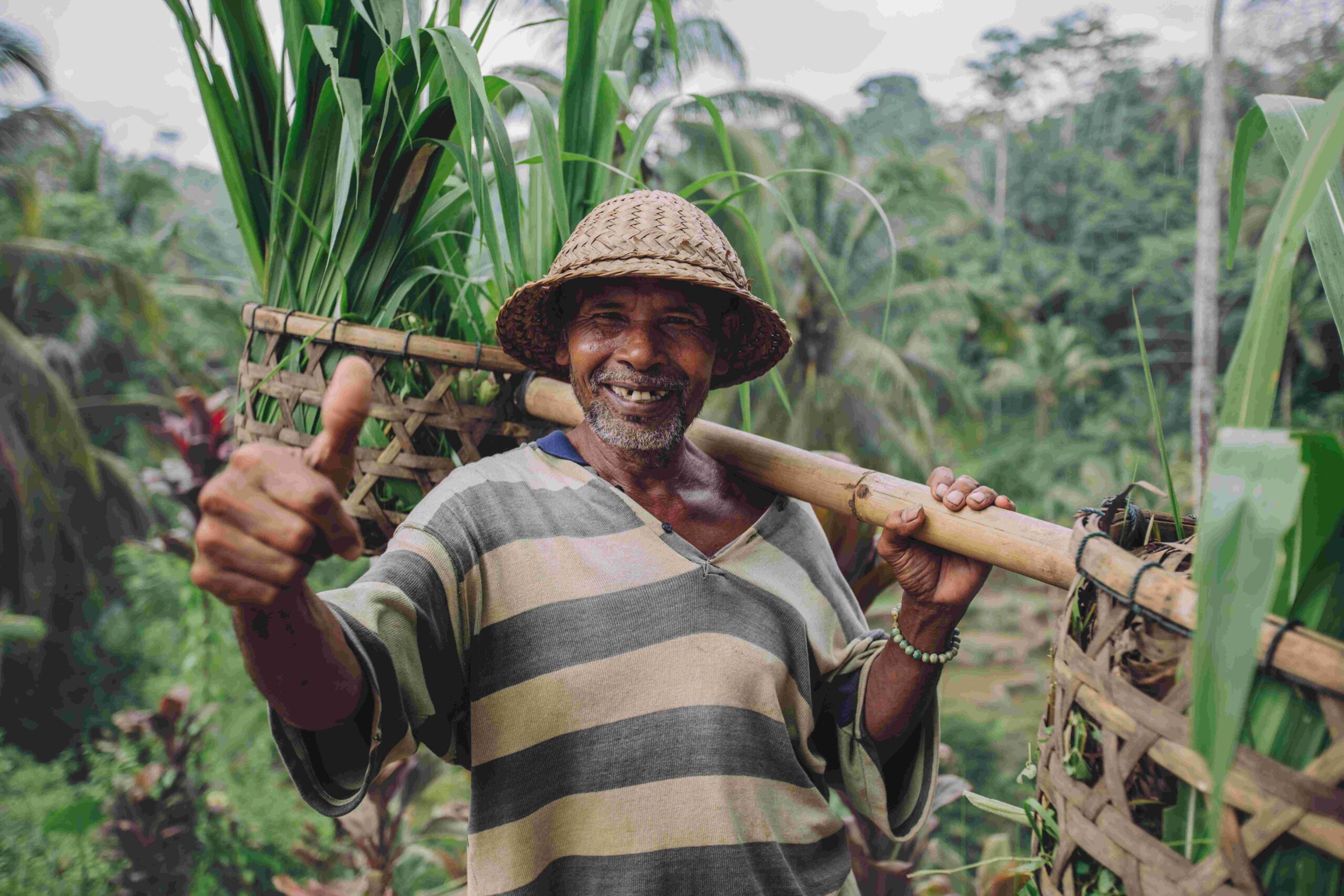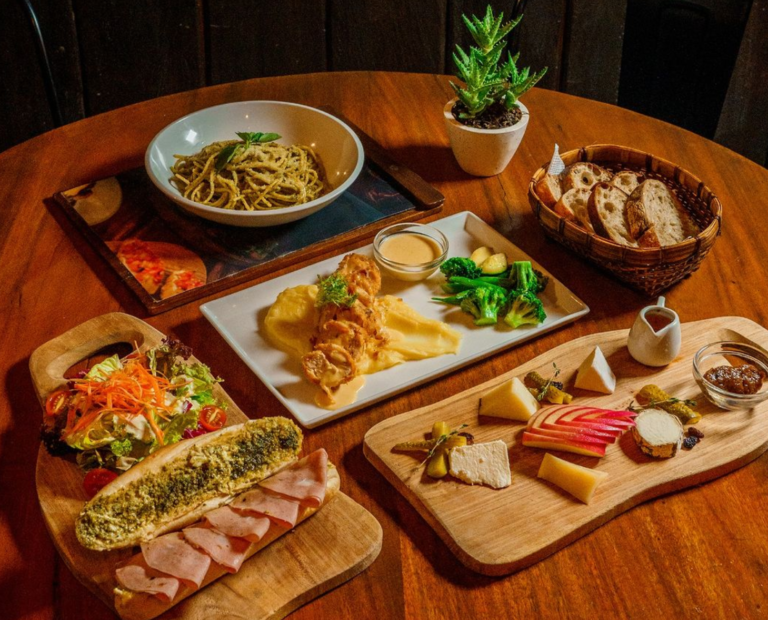When you tell people that there are only really four Balinese names, people either think you’re crazy or that Bali must be a very confusing place. But it’s true and Bali works just fine.
Balinese people have an unusual naming system that can seem unusual to outsiders, but it makes perfect sense when you know how it works.
The Origin Of Names In Balinese Culture And The Caste System

In the 14th century AD, the Kingdom of Java and Bali were part of the Majaphit Empire.
That empire originated in India and brought the caste system to Indonesia.
It’s important to note that the caste system has never had quite the same weight in Bali as in India. Certainly, the worst excesses of the Indian system have never manifested in Bali.
However, the system of castes has left a permanent mark on how people in Bali name themselves.
About The Balinese Caste System
The naming system is quite logical. It’s meant to allow anybody to understand a person’s class, military rank, and family tree just by looking at their name.
There are four castes in Bali (from lowest to highest), each with a slightly different naming convention.
However, given that most Balinese (in excess of 95%) are in the lowest caste, most names on the island follow a similar format.
As with India, though, inter-caste marriages are rare and generally considered taboo. So, don’t worry about what the Balinese name might derive from such a relationship. They simply aren’t common enough to matter.
The Lowest Caste (Farmer Caste) – Anak Jaba Or Sudra Caste
This group is the largest in Balinese society. They are symbolized in religious ceremonies using the colour black.
This class contains most workers and farmers.
They were said to come from Lord Brahma’s feet and thus are designed to serve others above them.
Waisya Caste (Merchants And Government Employees)
This group is much smaller and is symbolized using yellow. They carry out mainly public welfare tasks such as working for the government or as merchants.
They are meant to have emerged from the belly/thighs of the Lord Brahma and are thus the engine that moves the body of society.
Ksatria Caste (Royalty, Nobles and Military Elite)
This class is at a much higher position in society but not the highest. It is made up of the nobility and the military elites. It’s symbolized by red.
This group was meant to have emerged from Lord Brahma’s hands and were thus to carry the weapons to protect society.
The Highest Caste – Brahmana Caste (Priests And Saints)
This is the least common group and the highest-ranked caste. The Bahramana or Brahmin caste is generally made up of religious leaders and saints. It’s symbolized by the colour white.
The Brahmana Caste were said to have come forth from the mouth of the Lord Brahma and thus their voices were to be listened to and obeyed.
The Jaba – Those With No Caste
There is also a final group, the jaba, outside the caste system and considered “outsiders”.
Balinese People Have Three Components To Their Name

Thus, under the Balinese caste system, Balinese names have a particular structure and meaning that help other people know their place in society.
They consist of your title, birth order name and personal name.
Their Title
Your title denotes your class and some other information about you.
In the Sudra class, they have two titles. “Ni” for women and “I” for men. This is the first part of the most common Balinese names.
You could think of them as equivalent to “Ms.” and “Mr.” in English.
The Wasiya class uses titles to denote their profession rather than their gender and they can include Ngakan, Kompyang, Sang and Si. These titles don’t have an English equivalent.
The Ksatria caste has a wealth of titles that help denote the individual’s rank and gender. Men may use Anak Agung (Great), Tjok or Tjokorda (The Foot of the Gods), Gusti Ngurah (Heavenly Leader) and Dewa Agung (also Great).
Women use Anak Agung Ayu or Anak Agung Istri, Tjokorda Istri, Gusti Ayu, and Dewa Ayu or Desak.
The Brahmins opt for a two-title system with Ida Bagus (Good) for men and Ida Ayu (Beautiful) for women.
Their Birth Order Name
Then, you find the birth order name and differences in these for men and women, as well as some options for each place in the order.
First Born Child
For boys in the first place on the birth order, they use the Balinese name Wayan (Old or Mature), Putu (Grandchild) or Gede (Big)
For firstborn children that are girls, they use Ni Luh (Daughter), Ni Putu (Grandchild) or Ni Gede (Big).
It’s noteworthy that men often drop the title part of their name, but women usually expect you to use “Ni”.
Second Child
For boys in second in line in the birth order, they use the Balinese name Made (Middle), Kadek (Younger Sibling) or Nengah (Middle).
For girls, it’s Ni Made (Middle), Ni Kadek (Younger Sibling) or Ni Nengah (Middle).
Third Child
For boys in the next place on the birth order, they take the Balinese name Nyoman (derived from Anom-an, which means “Young” or “Smaller”) or Nengah (Middle). Occasionally, Nyoman can be replaced with “Komang” (which is derived from “Uman” which means “end” or “remainder”) .
For girls, Ni Nyoman (Young or Smaller) or Ni Nengah (Middle).
Fourth Born Child
The Balinese name for a fourth-born boy is Ketut (this is an odd word that might come from “Ketuwut” which means “Follow” but might come from “Kitut” which means “Small Banana”) or Ni Ketut (Follow or Small Banana) for a girl. This is the last name in the birth order system.

Starting All Over Again With The Fifth Born Child
With the fifth child, you go back to the start of the birth order, but you add another Balinese name after the number “Balik” which means, quite literally, ” the repeat”.
So, a fifth-born boy would be a Wayan Balik and a fifth-born girl would be a Ni Luj Balik.
They may also use a numeric instead of “Balik”. So you can meet a “Made the Second” and “Made the Repeat”.
The Personal Name
One thing you should know is that there is no such thing as a “family name” in Balinese.
While you have a personal name, which tends to be kept between close friends and family, there’s no surname or family name aspect to it, and your parents simply choose your personal name.
So, it’s not quite true that there are “only four names in Bali” but the name you learn for most people is one of only four.
That’s because a person’s personal name is not for public consumption.
There is an exception to this rule if the personal name is an English name.
You can meet folks called things like Wayan Martin and Ni Wayan Veronica. Men will still tend to stick to “Wayan, ” but women may opt to be called by their Western name.

Final Notes On Balinese Names
There are some other complexities to the naming system in Bali. They often involve the higher caste groups trying to explain their lineage (e.g. who their mother or father was) through their names.
This can get complicated and given that most people you meet will not be higher caste, it probably doesn’t matter too much anyway.
FAQs
What Are The 4 Balinese Names?
It’s not quite true that there are only four Balinese names. However, many people do have the same name and that’s because most Balinese people are lower caste and have a numeric portion to their name that indicates whether they were first born, second, third or fourth born. The system repeats for those families with more than four children.
What Are The Most Common Bali Names?
The most common names are Wayan, Putu, Gede or Luh because they refer to the firstborn child in any family.
What Is The Traditional Balinese Name?
A traditional name is a title, a birth order name and then someone’s personal name.
What Does Ketut Mean In Bali?
It denotes that someone is the fourth born child in their family but could mean “Follow” or “Small Banana”.
Final Thoughts On Names In Bali
The Balinese naming system isn’t as complicated as it might first seem and while everyone knows someone called Wayan or Wayan Balik, it doesn’t mean that every person has exactly the same name, either.
There is no tradition of family names but each individual can distinguish themselves via the use of their personal names when needed.
Naming is simply one of those pleasant Balinese quirks that make a visit to Bali so enjoyable and interesting.
Share this entry












